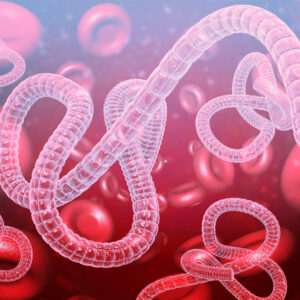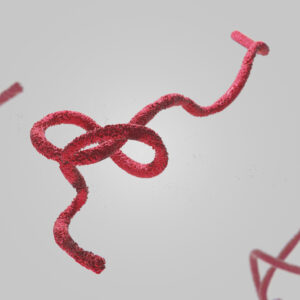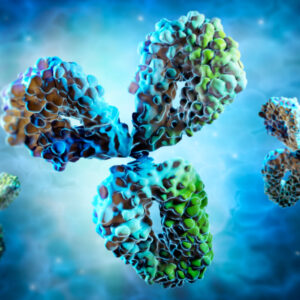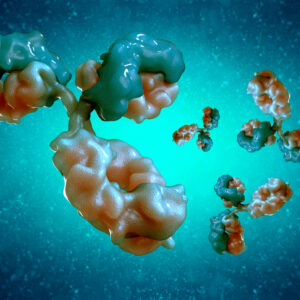Marburg Virus
Marburg hemorrhagic fever (Marburg HF) is a rare but severe hemorrhagic fever which affects both humans and non-human primates. It is caused by Marburg virus, a zoonotic RNA virus of the filovirus family, closley related to, but antigenically distinct from, Ebola virus. Marburg virus was first recognized in 1967, when outbreaks of hemorrhagic fever occurred simultaneously in laboratories in Marburg and Frankfurt, Germany and in Belgrade, Yugoslavia (now Serbia) after exposure to imported African green monkeys or their tissues.
Marburg HF is endemic to East and Central Africa and associated with fruit bats, cave, and mining exposure, or close contact with infected people. Most common presentation includes high fevers and headache, often with gastrointestinal symptoms (nausea/vomiting). Signs of bleeding are rare and associated with late disease. There is no specific treatment and case fatality rates have been as high as 80-90%.
Marburg Virus Background
Marburg virus (MARV) is a hemorrhagic fever virus of the Filoviridae family and a member of the species Marburg marburgvirus, genus Marburgvirus. MARV causes a form of viral hemorrhagic fever in humans and nonhuman primates and is considered to be extremely dangerous. The World Health Organization (WHO) classifies it as a Risk Group 4 Pathogen (requiring biosafety level 4-equivalent containment) and the United States National Institute of Allergy and Infectious Diseases ranks it as a Category A Priority Pathogen. Centers for Disease Control and Prevention lists it as a Category A Bioterrorism Agent. The Soviet Union had a biological weapons program that included MARV during the cold war era.
Marburg virus was first described in 1967 during small outbreaks in the German cities Marburg and Frankfurt and the Yugoslav capital Belgrade in the 1960s. German workers were exposed to tissues of infected grivet monkeys (Chlorocebus aethiops) resulting in 31 people becoming infected, seven of whom died.
The viral strains fall into two clades, Ravn virus and Marburg virus. Ravn virus (RAVV) is a close relative of Marburg virus and is considered equally dangerous. The Marburg strains can be divided into A and B. The A strains were isolated from Uganda, Kenya and Angola while B strains are from the Democratic Republic of the Congo and Uganda (Zehender et al., 2016).
The virus can be transmitted by exposure to Old World fruit bats or it can be transmitted between people via body fluids. The disease can cause bleeding (haemorrhage), fever and other symptoms similar to Ebola. Actual treatment of the virus after infection is not possible but early treatment of symptoms like dehydration increases survival chances (WHO). No licenced treatment or licenced vaccine is currently available.
Marburg virus and Ebola Zaire, Sudan, Taï Forest, and Bundibugyo viruses cause severe hemorrhagic fever in humans, and sporadic cases cannot be distinguished clinically from other causes of hemorrhagic fever including Lassa fever, Crimean-Congo hemorrhagic fever, yellow fever, or even malaria (Burrell et al., 2017). Filoviruses cause the most severe hemorrhagic fever in humans. The incubation period for Marburg and Ebola is generally 4–10 days followed by abrupt onset of fever, chills, malaise, and myalgia. The patient rapidly deteriorates and progresses to multisystem failure. Bleeding from mucosal membranes, venipuncture sites, and the gastrointestinal organs occurs followed by disseminated intravascular coagulation. Death or clinical improvement usually occurs around day 7–11. Survivors of the hemorrhagic fever are often plagued with arthralgia, uveitis, psychosocial disturbances, and orchitis for weeks after the initial fever (Ryan, 2016).
References
- Burrell et al. Fenner and White’s Medical Virology (Fifth Edition) 2017, Chapter 28 – Filoviruses. Pages 395-405.
- Ryan, JR. Chapter 3 – Biosecurity and Bioterrorism (Second Edition) Containing and Preventing Biological Threats 2016, Category A Diseases and Agents. Pages 51-84
- Zehender et al. (2016). Distribution of Marburg virus in Africa: An evolutionary approach. Infection, Genetics and Evolution. Volume 44, Pages 8-16.
- Warfield and Aman (2011). Advances in virus-like particle vaccines for filoviruses. J Infect Dis. 204(Suppl 3): S1053–S1059.
- World Health Organisation (WHO). Marburg virus disease. 15 February 2018.
Marburg Virus Antigens
We are pleased to offer a Marburg virus GP protein, manufactured in mammalian cells.
Marburg Virus Antibodies
We are pleased to offer a range of monoclonal antibodies, which recognise Marburg virus proteins.
Questions?
Check out our FAQ section for answers to the most frequently asked questions about our website and company.





